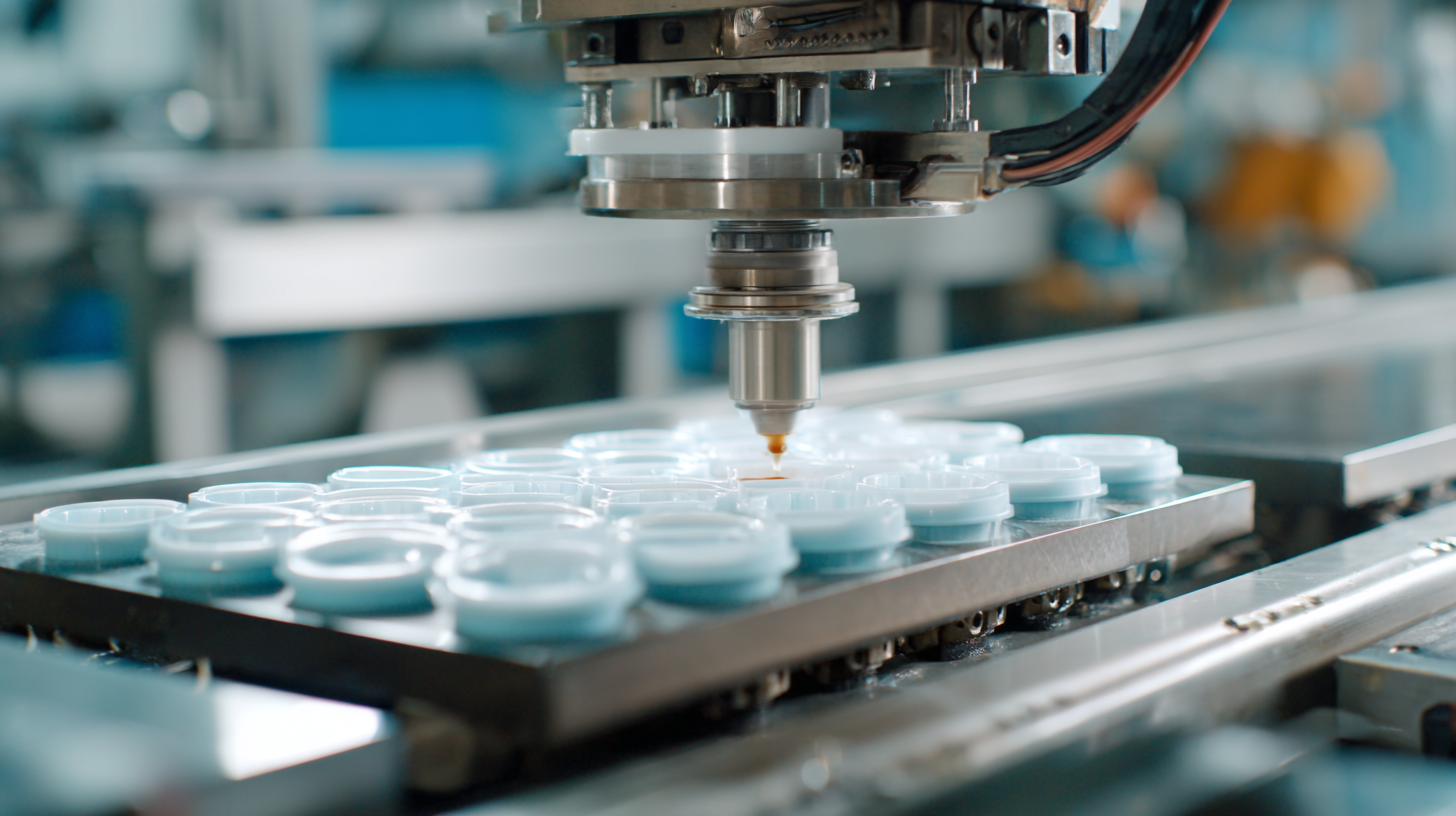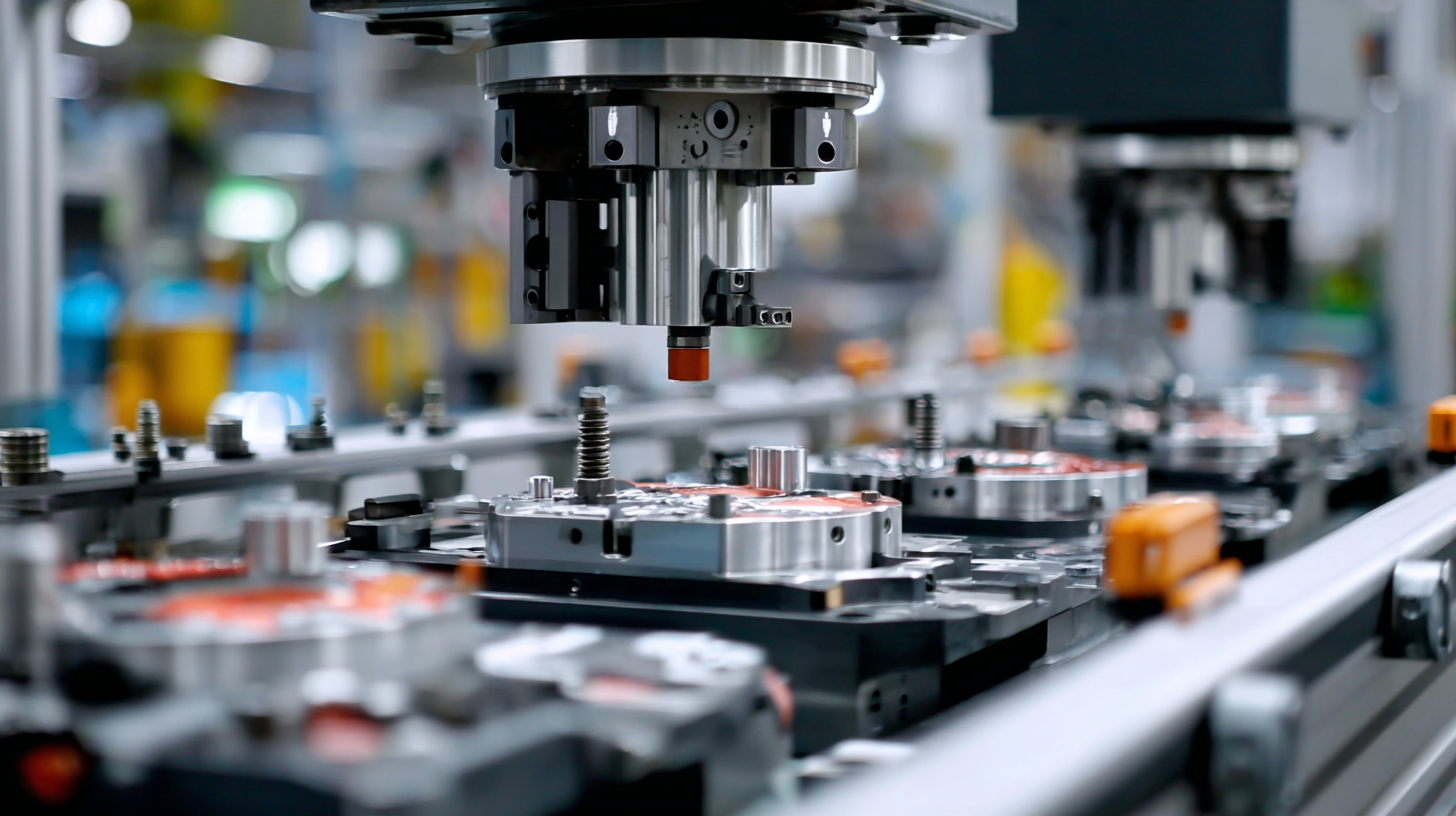 Molding products play a pivotal role in the modern manufacturing landscape, acting as essential components that drive both efficiency and innovation. The process of molding involves shaping materials, typically plastics or metals, into precise forms, allowing manufacturers to create standardized, high-quality parts at a rapid pace. As industries increasingly focus on optimizing production processes to meet the demands of a competitive market, the significance of molding products cannot be overstated. These products not only facilitate mass production but also enhance design flexibility, enabling manufacturers to explore innovative solutions that cater to diverse consumer needs.
Molding products play a pivotal role in the modern manufacturing landscape, acting as essential components that drive both efficiency and innovation. The process of molding involves shaping materials, typically plastics or metals, into precise forms, allowing manufacturers to create standardized, high-quality parts at a rapid pace. As industries increasingly focus on optimizing production processes to meet the demands of a competitive market, the significance of molding products cannot be overstated. These products not only facilitate mass production but also enhance design flexibility, enabling manufacturers to explore innovative solutions that cater to diverse consumer needs.
This introduction will delve into the multifaceted impact of molding products on manufacturing efficiency, exploring how these items not only streamline operations but also foster a culture of innovation that propels industries forward.
By examining the intersections of technology, design, and manufacturing processes, we can better understand the transformative power of molding products in shaping the future of production.
Molding products are essential components in various industries, serving as the foundation for creating a wide range of goods. These products are typically fabricated using a process known as molding, which involves shaping material—commonly plastics, metals, or glass—by pouring it into a predefined mold. The two primary types of molding include injection molding and blow molding. Injection molding is widely used for high-volume production, where molten material is forced into a mold, creating complex shapes with high precision. On the other hand, blow molding is primarily utilized for creating hollow objects, such as bottles, by inflating a heated plastic tube within a mold.

In addition to injection and blow molding, there are other techniques like rotational molding and compression molding, each tailored for specific applications. Rotational molding allows for the production of large, hollow items, while compression molding is effective for producing robust products from thermosetting plastics. The diverse types of molding products not only enhance manufacturing efficiency but also foster innovation by enabling the creation of intricate designs and durable materials. This versatility in molding processes translates into significant advancements in product development, giving manufacturers a competitive edge in various markets.
Molding techniques play a crucial role in enhancing manufacturing efficiency by streamlining production processes and reducing waste. According to a report by the Plastics Industry Association, advanced molding techniques, such as injection molding, can achieve production efficiencies of up to 90% compared to traditional methods. This efficiency is driven by the ability to produce complex shapes with minimal manual intervention, thereby significantly decreasing labor costs and production time.
Moreover, molding products contribute to innovation within industries by enabling the rapid prototyping of new designs. A study by the American Society for Testing and Materials (ASTM) indicates that utilizing state-of-the-art molding methods can reduce the product development cycle by up to 50%. This acceleration not only helps manufacturers meet market demands more swiftly but also fosters a culture of continuous improvement and creativity. As industries increasingly adopt such technologies, they position themselves to lead in innovation while simultaneously enhancing overall operational efficiency.
Innovative materials play a crucial role in advancing molding processes, significantly impacting manufacturing efficiency and fostering innovation. The adoption of advanced polymers, composites, and bio-based materials has transformed traditional molding techniques, enabling manufacturers to create lighter, stronger, and more versatile products.
 For instance, thermoplastic elastomers (TPEs) offer excellent flexibility and durability, making them ideal for applications ranging from automotive components to consumer goods. This versatility allows companies to optimize their production lines, reducing waste and lowering material costs.
For instance, thermoplastic elastomers (TPEs) offer excellent flexibility and durability, making them ideal for applications ranging from automotive components to consumer goods. This versatility allows companies to optimize their production lines, reducing waste and lowering material costs.
Moreover, the integration of nanomaterials into molding processes has opened up new avenues for product performance enhancements. By incorporating nanoparticles into plastics, manufacturers can achieve superior mechanical properties and thermal resistance, leading to innovative applications in high-performance industries such as aerospace and electronics. These advancements not only push the boundaries of what is possible in product design but also streamline production processes, resulting in shorter lead times and reduced energy consumption. The continuous exploration of innovative materials ultimately drives competitive advantage and positions manufacturers at the forefront of industry advancements.
Molding products have become essential in various industries, enabling manufacturers to create complex shapes with precision and speed. A significant case study highlighting the impact of molding applications is in the automotive sector. According to a report by Markets and Markets, the global automotive molding market is projected to reach $27 billion by 2025, driven by advancements in injection molding technologies. Companies like Ford and Toyota leverage these innovations to reduce production time and costs while enhancing the durability and aesthetics of their vehicles. This strategic use of molding not only improves operational efficiency but also supports sustainability efforts through material optimization.
In the consumer electronics industry, molding has proven equally transformative. For instance, Apple utilizes precise injection molding techniques to manufacture components that require exceptional quality and minimal tolerances. A study by Grand View Research indicates that the global injection molding market in consumer electronics is expected to grow significantly, driven by rising demand for lightweight and compact devices. This not only enhances product performance but also accelerates time-to-market, allowing companies to stay ahead in a rapidly evolving sector. Through these examples, it is clear that molding applications play a crucial role in driving innovation and efficiency across multiple industries.
The molding products sector is experiencing significant transformation driven by technological advancements and the push for sustainability. Recent reports indicate that the global market for molding products is projected to grow substantially, fueled by innovations in automation and smart manufacturing. For instance, the MIMF 2025 is set to showcase cutting-edge technologies, which underscores the industry’s commitment to integrating smart devices into molding processes. As manufacturers adopt advanced techniques, they can enhance productivity, reduce costs, and improve product quality, facilitating a competitive edge in the market.
Furthermore, the automotive mold industry exemplifies the shift towards sustainable practices. With increasing emphasis on electric vehicles (EVs) and advanced manufacturing methods, mold companies are exploring downstream opportunities to diversify and secure future growth. Reports suggest that the automotive mold market could see a substantial increase as manufacturers align their operations with industry trends such as lightweight materials and energy-efficient production. This not only fosters innovation but also meets the evolving demands of environmentally conscious consumers, marking a significant step in the transition towards a more sustainable future in manufacturing.
| Product Type | Material Used | Manufacturing Process | Impact on Efficiency | Impact on Innovation | Future Trends |
|---|---|---|---|---|---|
| Injection Molding | Thermoplastics | High Precision Injection | High throughputs and reduced cycle times | Advanced shapes and design innovations | Smart manufacturing and automation integration |
| Blow Molding | Polyethylene | Continuous extrusion | Cost-effective large-volume production | Improved ergonomics in product design | Sustainability-focused materials |
| Compression Molding | Rubber and Thermosetting Plastics | Manual and Automated Pressing | Lower startup costs with less waste | Enhanced customization capabilities | Innovations in heat-resistant materials |
| Vacuum Forming | Acrylic and Polycarbonate | Thermoforming techniques | Rapid prototyping with minimal tooling | Custom shapes for niche markets | Integration with 3D printing technologies |
| 3D Printing | Various Plastics and Metals | Additive Manufacturing | Highly efficient material usage | Unprecedented design freedom | Customization trends for on-demand production |